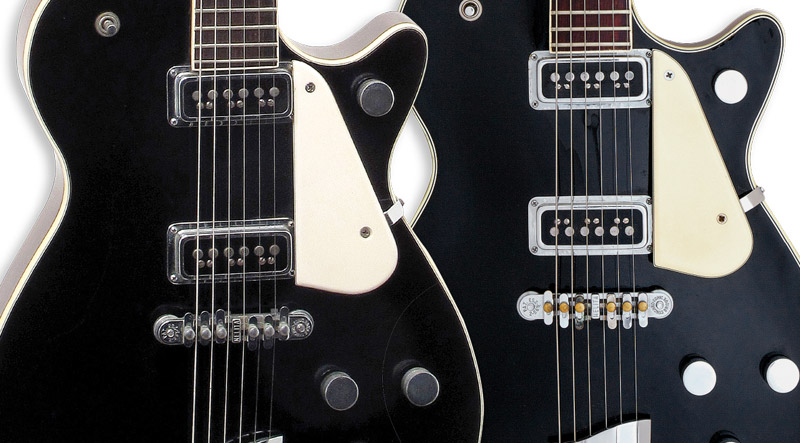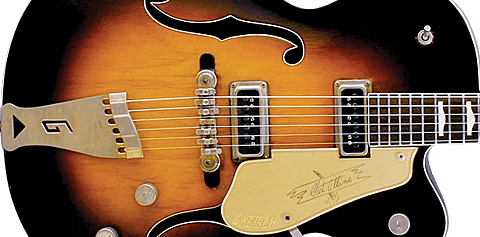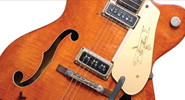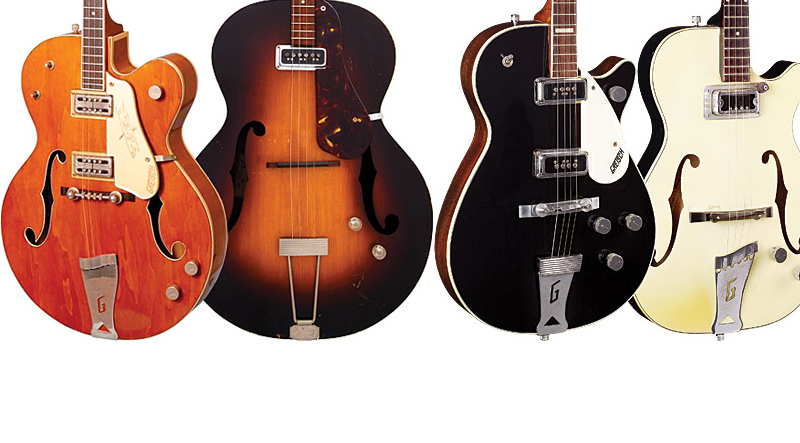-
Edward Ball
The Birth of the Gretsch Duo Jet
Gretsch Gets With It!
In 1950, Leo Fender introduced the Broadcaster. The first solidbody electric Spanish guitar to bear his soon-to-be-famous name, its thin profile, light weight, and utilitarian dual-pickup configuration combined to make the guitar an immediate success. Gibson, which had dominated the electric-guitar market for years with its archtops, entered the emerging electric solidbody market after approaching…
-
Edward Ball
Gretsch Country Gent #1
The Gretsch Country Gentleman 6122 was the third of four Chet Atkins signature guitar models created for the legendary guitarist in the ’50s. The little-known truth is it was also a response to all the things Atkins did not like about the first model Gretsch conjured for him – the 6120 Hollowbody. The reality is…
-
Edward Ball
Horses of Another Color
1) This ’57, from batch 253xx, has the added intrigue of a gold G-cutout tailpiece in place of the Bigsby vibrato. In addition to the standard Amber Red stain on the 6120, the Bigsby was requisite on the Atkins-endorsed models. Having a 6120 that lacks both the finish and the vibrato seem to constitute heresy!…
-
Edward Ball
Earliest Gretsch 6120
…Revealed!
The Gretsch company rose to the upper echelon of guitar manufacturers in the 1950s with the introduction of a diverse and dynamic array of electric models. Arguably the most identifiable guitar design of that time was the Chet Atkins Hollowbody model 6120, with its distinctive orange-stained finish, “G-brand” body, and decidedly Western aesthetic. Recently, a…
-
Edward Ball
Gretsch’s “Golden” Tenors
In the 1950s and early ’60s, the electric guitar was establishing itself as a key part of the new voice of popular music. Amplification provided its volume, and innovative artists were pushing the envelope of sound that could be offered by six strings. So it’s interesting that in a time referred to in retrospect as…





